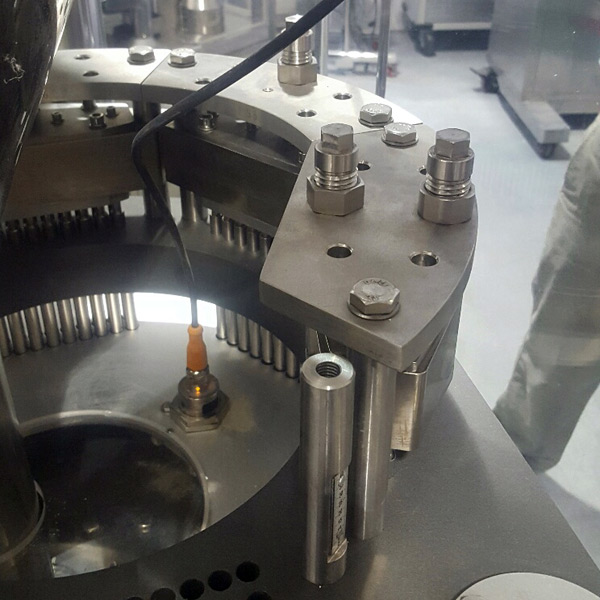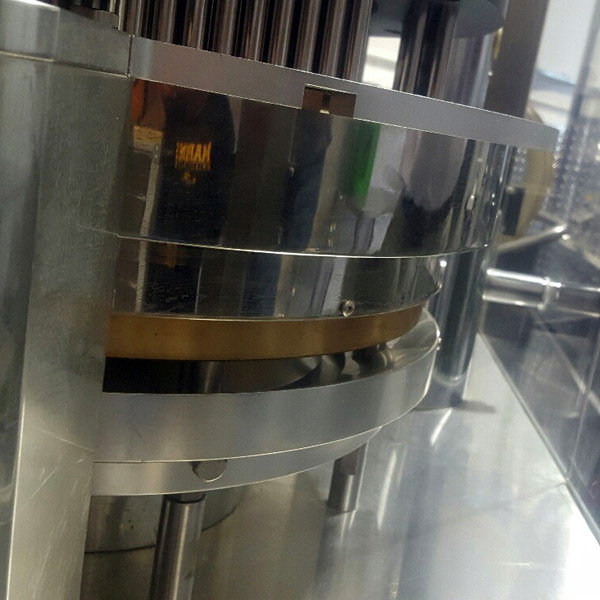Powder Handling in the encapsulation process poses challenges for solid dose producers of supplements, and there are many considerations driven by consumer awareness that should be considered.
Powder Handling In The Encapsulation Process
Many in the supplement business are wanting to get excipients out of their formulations. Regardless of the functions these ingredients perform and the real or imagined side effects, the consumer wants them out of the supplements. Recent studies demonstrated that almost all demographics are looking more closely at ingredient statements on supplement bottles. So, this expert article focuses on the implications of removing these ingredients from your formulas, and the impact it will have on your powders and subsequently on your supplement processing and packaging machinery.

Ability to Measure & Assess Powders Is Key
The first point to be aware of is: If you can’t measure it, you can’t manage it. Quantitative understanding of powder properties will help you manage machine parameters and powder properties. Basic tests of angle of repose, Hausner and Carrs index, particle size ratio, and glass transition temperature will help you understand how these measurements impact the machinability of your powders. At Right Stuff Equipment, we look at powders every day for customers. We have a small but effective lab to look at products and assess how the physical properties of powder will impact performance on a machine. This is a critical step that helps you plan for and accommodate powder handling with your processing and packaging machines.
Encapsulation & The Use Of Magnesium Stearate
Removal of Magnesium Stearate is high on many lists for removal. Magnesium stearate is a white powder that combines the essential mineral magnesium and the saturated fat stearic acid. It provides a small amount of magnesium, but it’s primarily used as an inactive ingredient in the pharmaceutical and supplement industries to produce better machine performance of solid dose products. It benefits the flow of powders and the lubrication properties it imparts on powders when they are compressed. The particles of Magnesium Stearate adhere to the powders and the metal surfaces acting as a lubricant. This lubrication is critical in tableting where compression causes the powder to expand and exert lateral pressure in the die, but also aids in encapsulation.
One of the main concerns about the use of magnesium stearate has been noted in some medical literature. In tests, magnesium stearate has been shown to increase the time it takes for tablets and capsules to dissolve due to the film it forms on capsule or tablet ingredients. Magnesium stearate coats tablet or capsule powders, requiring digestive enzymes to break down the magnesium stearate coating before doings its work on the nutrients it coats. The same properties that improve the performance on a machine are cited as a detriment when consumed.
General Power Handling Flow Tips
So, what does this mean for your supplement processing & packaging machinery? The angle of repose will impact how well the powder spreads in the powder bowl of your encapsulation machine. Powder that stands up straight has poor flow. Powder that runs like water will flatten out and have a nice flow. (Powder that’s too flat also has negative consequences.)
Powder Handling Machine Set-up Tips When Running Without Magnesium Stearate
 We’ve been designing & building powder handling equipment for decades, and here are expert tips on running supplement processing machinery without using magnesium stearate.
We’ve been designing & building powder handling equipment for decades, and here are expert tips on running supplement processing machinery without using magnesium stearate.
Polish the Tamping Pin With A Fat-based Polish – This will create less sticking of powder.
Use Scraper Blades – This creates an even powder bed in the bowl.
Look at Alternative Ingredients as Lubricants – Work has been done on natural wheat derived alternatives that are gaining acceptance in the market.
Watch the Diameter of the Powder Bowl – The diameter of the powder bowl is very important. The larger the powder bowl, the greater the diameter to spread out the powder and create a nice flat powder bed which results in a tighter weight variance. Our Pocket Series of encapsulation machines have a nice small footprint but along with that small footprint is a smaller powder bowl. This is true of all machines built on the smaller footprints. The CFM series has more power than a larger frame and a larger bowl, resulting in better distribution of powder and weight control.
Recommended Machine Speeds – When running higher speed machines, you will often have more than one row of bores in the segment. In this case, an adjustment that can allow you to make the final penetration of tamping pins on the inside row vs. the outside row, will allow you to compensate for a powder that has a slightly different depth in the bowl. With a poor angle of repose, the weights can vary between the inside row and the outer row. We developed a device called The Clamper Set. It allows you to adjust the penetration depth between the rows and tighten that weight variance.
Use of a Ladder Bowl – The Ladder Bowl is a recent development which essentially changes the design of the traditional powder bowl. When products have a poor angle of repose, they tend to pile up in front of the station that pushes the powder into the capsule body. That results in the powder being starved at the first tamping station. The ladder bowl allows the powder to flow evenly around this insertion station and keep a better powder level at the first tamping station. Again, this impacts powder bowl depth, evenness and weight control.
Use of Inverse Cones – A cone placed in the powder bowl can help fight the negative effect of poor flowing powders.
Placement of the funnel discharge toward the edge –By putting the powder at the edge rather than the center of the bowl, the powder has a more consistent depth where the bores in the dosing disk are located. This improves the consistency of powder going into the bores and reduces mounding in the powder bowl.
Powder handling without the use of magnesium stearate as a lubricant and production facilitator requires specific approaches to help the processing. Consider these tips when considering the removal of magnesium stearate from your solid dose processing.
If you’re in supplement processing and need expert advice or equipment related to powder handling, supplement or food production, call Right Stuff Equipment at 303.327.4704, or Email Us
